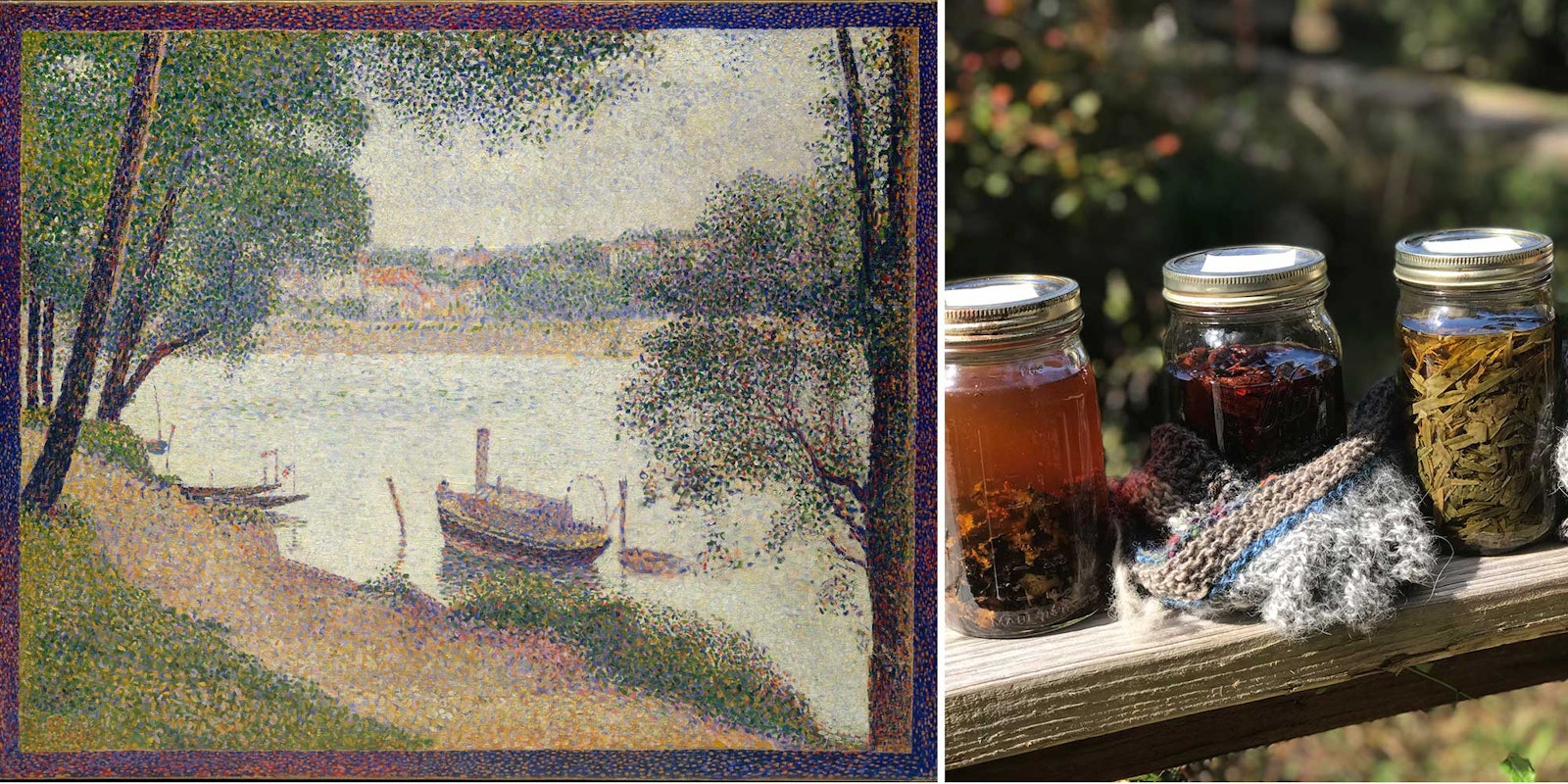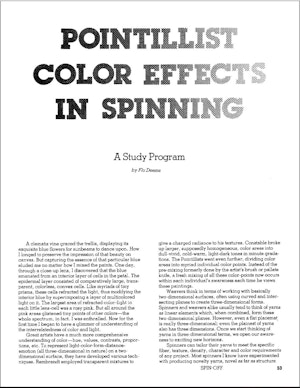In the 1980 issue of Spin Off, author Flo Deems talked about experimenting with dyes to produce interestingly colored yarns that give a pointillist effect when used. In a nod toward pointillism, the author describes her failed efforts in reproducing the blues of a clematis vine with paints, only to discover upon closer inspection of the petals that while the interior layers of the petals were blue, the outer layers were made up of many cells which refracted light in the whole spectrum of colors.
Whether you’re a fan of fine art or not, you may have heard the term pointillism, which refers to the painting technique pioneered by Georges Seurat and his student Paul Signac in the mid-1880s. Pointillism employs small dots or strokes of pure, unmixed color that are placed next to one another. According to Seurat, these dots of color are blended by the viewer’s eye to create more vibrant hues than colors mixed on a palette. The most well-known example of this technique is Seurat’s A Sunday Afternoon on the Island of La Grande Jatte, which hangs in a dedicated room at the Art Institute of Chicago. Having seen the painting in person, I can attest to the optical effects of color blending when viewing the painting from afar. Closer inspection reveals Seurat’s dots of precisely placed colors. Learn more about this famous painting here.
 Georges Seurat, A Sunday Afternoon on the Island of La Grande Jatte, 1884, Helen Birch Bartlett Memorial Collection. Courtesy of the Art Institute of Chicago
Georges Seurat, A Sunday Afternoon on the Island of La Grande Jatte, 1884, Helen Birch Bartlett Memorial Collection. Courtesy of the Art Institute of Chicago
As we touched on in the recent Spring 2023 issue of Spin Off, it’s through experimentation that spinners can discover how colors interact when placed together, and the best way to uncover this is through practice. In her 1980 article, Deems encourages us to let go of our pre-conceived notions of color through “experimental production and creative application.” In other words, to learn by doing, not by copying. This article gives the reader exercises to try, outlining steps for color blending using both natural and acid dyes. Instructions for creating value samples by mixing black and white in even gradations plus an exercise in observing the interaction of primary colors—red, yellow, and blue—in various proportions are among the tutorials Deems provides.
So, go on, allow yourself to play and experiment, and in turn discover how to create more vibrant hues in your yarns.
“Pointillist Color Effects in Spinning: A Study Program,” by Flo Deems, is available as a free resource in the Spin Off library. And we’re regularly adding to our library, so if it’s been awhile since you’ve visited, come see what’s new!
Debbie Blair is the associate editor of Spin Off magazine. A lifelong crafter and avid reader, she finds her happy place reading and relaxing next to a mountain stream.


